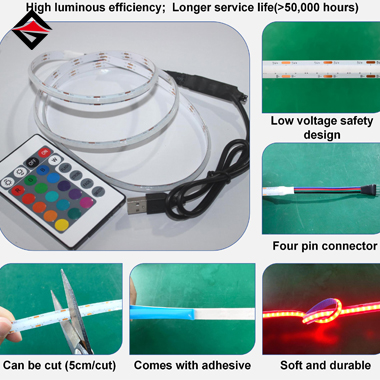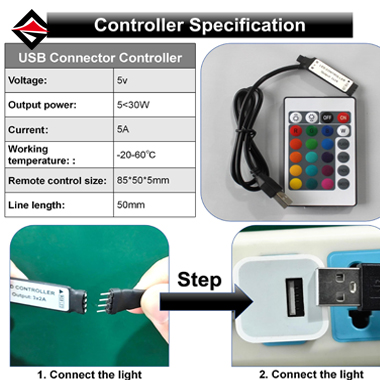
What does IR mean in a light strip controller?
And what is its principle?
Contact Name : Penny;Tel /Whatsapp: +8615327926624;Email : sale@ledtealight.com
I. Working Principle of IR (Infrared)
1. Signal transmission
Controller (Remote control) :
When the user presses the key on the remote control, the internal chip will generate the corresponding binary code signal (different keys correspond to different codes).
This signal is converted into infrared light waves (with wavelengths typically ranging from 760nm to 1mm, which belong to invisible light) by infrared light-emitting diodes (leds) and emitted into the surrounding space.
2. Signal transmission
Line-of-sight transmission characteristics:
Infrared rays travel in a straight line. It is necessary to ensure that there are no obstructions (such as walls, furniture, etc.) between the remote control and the LED strip receiver; otherwise, the signal will be blocked.
If there are obstacles in the middle, the Angle or position needs to be adjusted to ensure that the light shines directly on the receiver.
3. Signal reception and decoding
LED Light strip receiver:
The receiver is equipped with an infrared photodiode inside, which can detect the intensity changes of infrared light waves.
When light waves are received, the photodiode converts the light signal into an electrical signal and transmits it through the circuit to the decoding chip.
The decoding chip parses the binary code in the electrical signal, identifies user operations (such as turning on the light, dimming, changing color, etc.), and drives the light strip to execute the corresponding instructions.


Ii. Core Characteristics of IR (Infrared)
1. Advantages
Low cost:
The hardware structure is simple (only infrared leds and photodiodes are required), making it suitable for low-cost scenarios (such as household light strips and basic lighting fixtures).
Convenient operation:
No pairing or Internet connection is required. It responds immediately upon pressing, and the learning cost for users is low (similar to traditional home appliance remote controls).
Low power consumption:
Remote controls usually use button batteries or dry batteries, and their battery life can last for several months to several years (depending on the frequency of use).
2. Disadvantages
Strict visual distance limit:
It must be aligned in a straight line with the receiver, and the control distance should be short (usually 5 to 10 meters). It cannot be used when it exceeds the range or is obstructed.
Weak anti-interference ability:
Strong light (such as sunlight, halogen lamps) may interfere with infrared signals, causing false triggering or a decrease in sensitivity.
Poor multi-device compatibility:
The IR codes of different brands may vary. Remote controls usually can only match specific models of light strips and are not interchangeable.
Iii. Typical Application Scenarios of IR (Infrared) in LED Strip Light
1. Basic household lighting
Bedside LED Lighting, desk light strips:
The switch, brightness or color temperature can be controlled at close range through a small IR remote control, making it suitable for simple scenarios that do not require complex interlocking.
Decorative light strips (such as cabinets, ceilings) :
When installing, hide the receiver near the light strip and directly aim the remote control for control to avoid exposing the circuit and affecting the appearance.
2. Low-cost business scenarios
Lighting for small shops and display cabinets:
No intelligent system is required. The color or brightness of the light strips can be quickly adjusted through the IR remote control to meet the basic display needs.
Temporary activity arrangement:
For instance, the temporary light strip decorations set up at parties and exhibitions can be quickly deployed with IR control, reducing equipment costs.
Summary
IR (Infrared) is a simple and economical light strip control technology. With its low power consumption and on-demand control features, it is widely used in basic lighting scenarios. However, its line-of-sight limitation and anti-interference shortcomings make it more suitable for the control requirements of small-scale and non-complex environments. If remote operation, multi-device linkage or intelligent functions are required, technologies such as RF (radio frequency) or Wi-Fi are more recommended.
In the next article, we will introduce RF controllers in detail. Please wait!